In the world of engineering education, there are many excellent courses, but often the curriculum has one serious drawback – the lack of good connectivity between different topics. Over in Saint Petersburg, Russia, Kirill Krinkin from SPbETU and JetBrains Research has been using Duckietown to address this problem through an intensive STEM winter course.
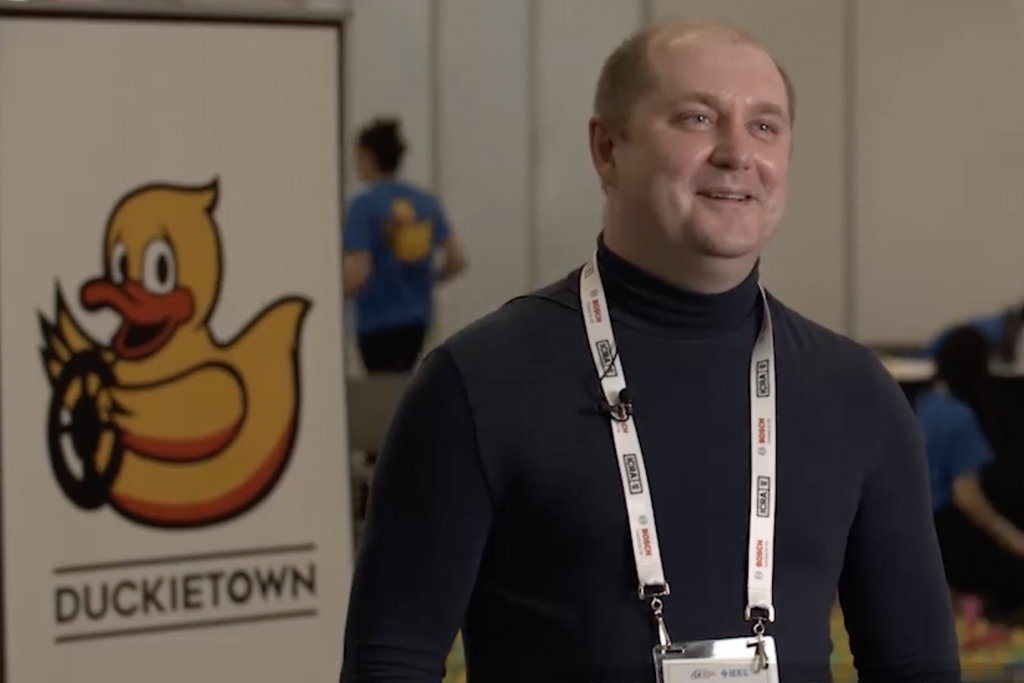
STEM Intensive Learning Approach
by Kirill Krinkin
The first part of the school program was a week of classes in the base topic areas which were chosen to complement each other and help students see the connection between seemingly different things – mathematics, electronics and programming.
Of course, the main goal of the program was to give students the opportunity to put their new found knowledge into practice themselves.
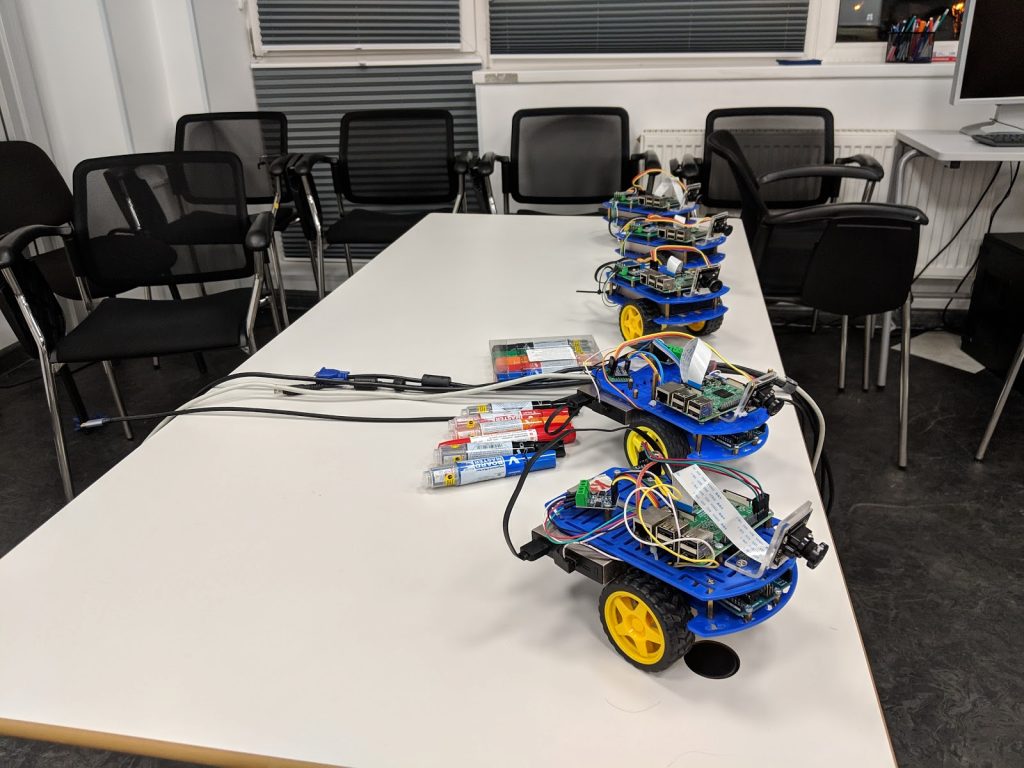
Duckietown was the perfect fit for our course because it offered a hands-on learning experience for all of our main topics areas, and once we covered those subject in the first lessons, we challenged the students with much more complex tasks – in the form of projects – in the second half of the course. It made for an exciting and engaging curriculum because students could address a problem, write a program to solve it, and then immediately launch it on a real robot.
The main advantage of Duckietown compared to many other platforms is that there is a very small learning curve: people who knew nothing about programming and robotics started working on projects after only a few days!
Overview of the course
Part 1 – Main Topic Areas
Subject 1: Linear Algebra
Students spent one day studying vectors and matrices, systems of linear equations, etc. Practical tasks were built in an interactive mode: the proposed tasks were solved individually, and the teacher and other students gave comments and tips.
Subject 2: Electricity and Simple Circuits
Students studied the basics of electrodynamics: voltage, current, resistance, Ohm’s law and Kirchhoff’s laws. Practical tasks were partially done in the electric circuits simulator or performed on the board, but more time was devoted to building real circuits, such as logic circuits, oscillatory circuits, etc.
Subject 3: Computer Architecture
In a sense, a bridge connecting physics and programming. Students studied the fundamental basis, the significance of which is more theoretical than practical. As a practice, students independently designed arithmetic-logic circuits in the simulator.
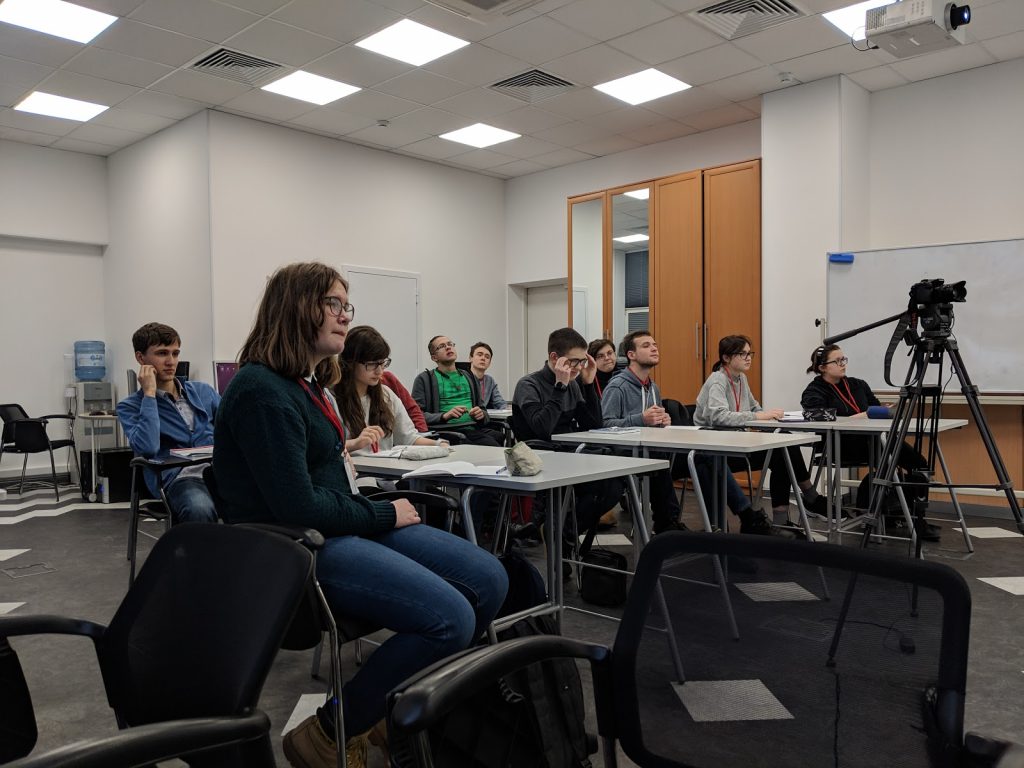


Subject 4: Programming
Python 2 was chosen as the programming language, as it is used in programming under ROS. After we taught the material and gave examples of solving problems, students were challenged with their own problems to solve, which we then evaluated.
Subject 5: ROS
Here the students started programming robots. Throughout the school day, students sat at computers, running the program code that the teacher talked about. They were able to independently launch the basic units of ROS, and also get acquainted with the Duckietown project. At the end of this day, students were ready to begin the design part of the course – solving practical problems.
Part 2 – Projects
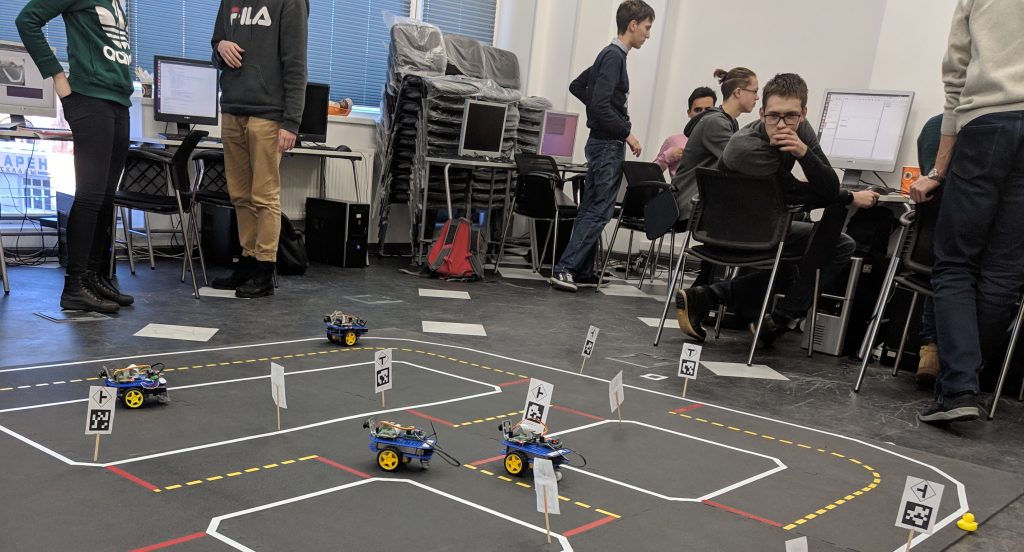
1. Calibration of colors
Duckiebots needs to calibrate the camera when lighting conditions change, so this project focussed on the task of automatic calibration. The problem is that color ranges are very sensitive to light. Participants implemented a utility that would highlight the desired colors on the frame (red, white and yellow) and build ranges for each of the colors in HSV format.
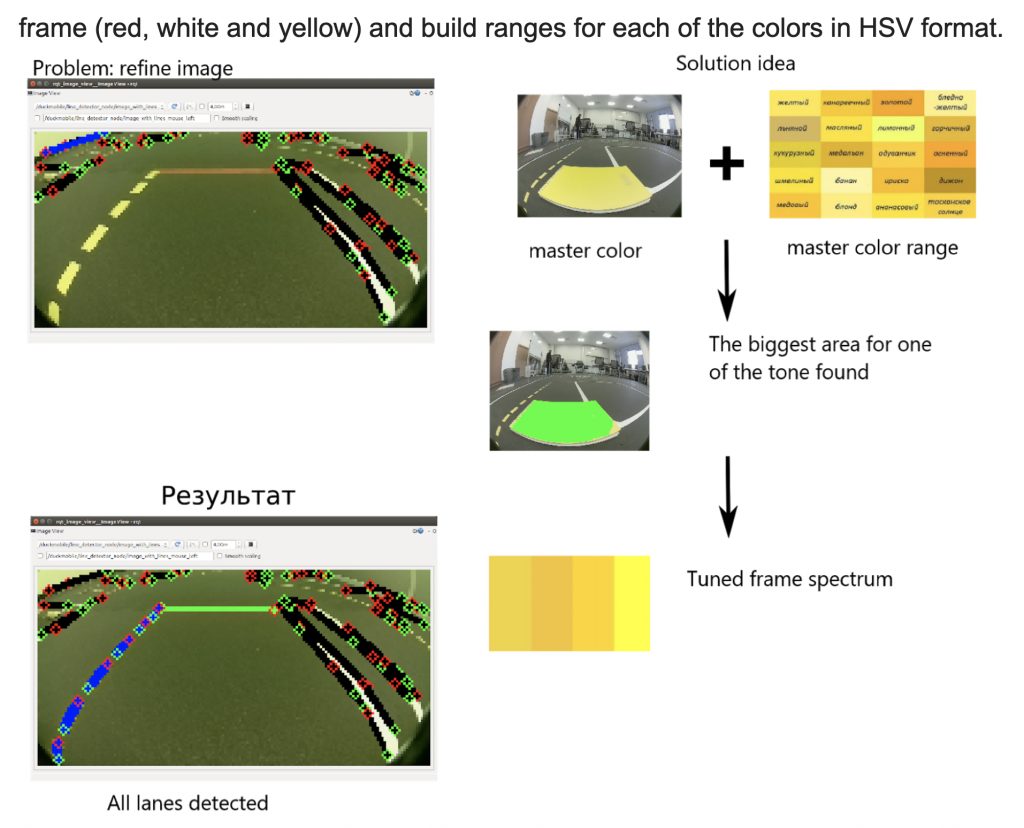
2. Duck Taxi
The idea of this project was that Duckiebot could stop near some object, pick it up and then continue along, following a certain route. Of course, a bright yellow Duckie was the chosen passenger. The participants divided this task into two: detection and movement along the graph.
drive while Duckie is not detected
Duckie identified as a yellow spot with an orange triangle 🙂
Building a route according to the road graph and destination point
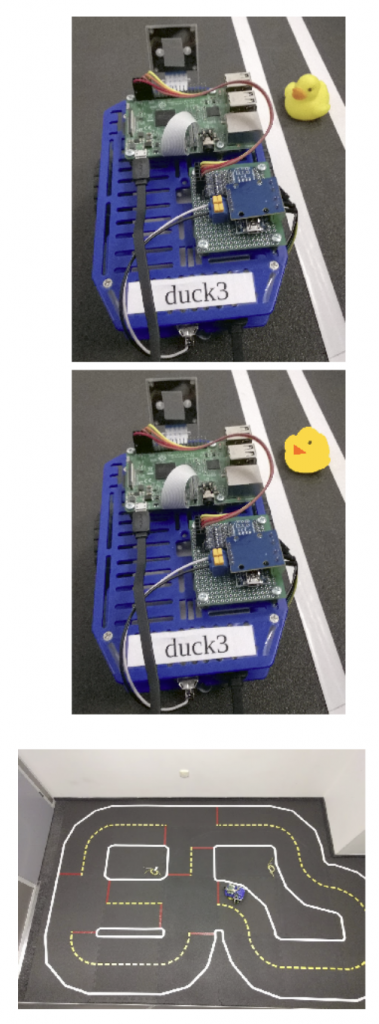
3. Building a road map
The goal of this project was to build a road map without providing a priori environmental data for the Duckiebot, relying solely on camera data. Here’s the working scheme of the algorithm developed by the participants:
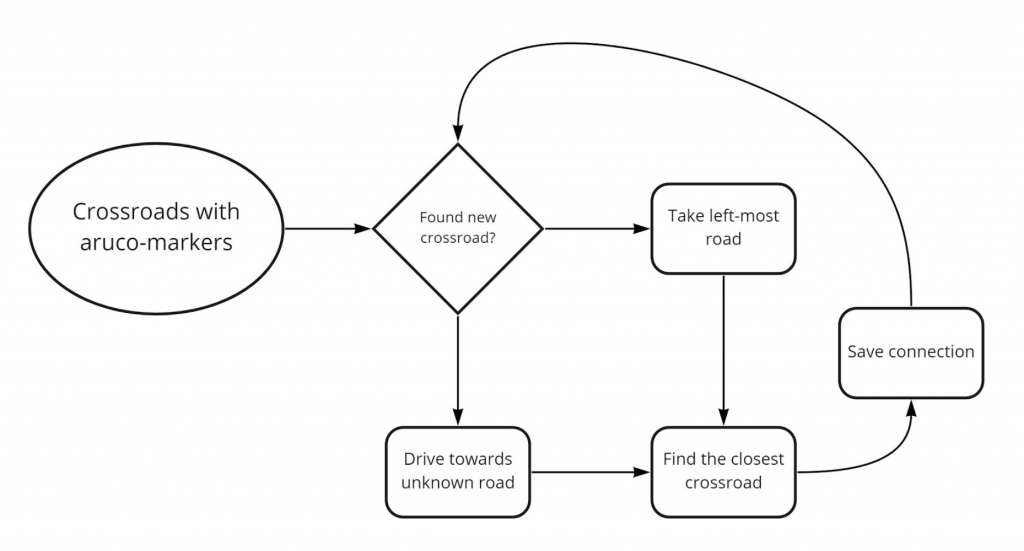
4. The patrol car
This project was invented by the students themselves. They offered to teach one Duckiebot, the “patrol”, to find, follow, and stop an “intruding” Duckiebot. The students used ArUco markers to identify the Intruder on the road as they are easy to work with and they allow you to determine the orientation and distance of the marker. Next, the team changed the state machine of the Patrol Duckiebot so that when approaching the stop-line the bot would continue through the intersection without stopping. Finally, the team was able to get the Patrol Duckiebot to stop the Intruder bot by connecting via SSH and turning it off. The algorithm of the patrol robot can be represented as the following scheme:

Summary
Students walked away from our STEM intensive learning program with the foundations of autonomous driving, from the theoretical math and physics behind the programming and circuitry to the complex challenges of navigating through a city. We were successful in remaining accessible to beginners in a particular area, but also providing materials for repetition and consolidation to experienced students. Duckietown is an excellent resource for bringing education to life.
After our course ended students were asked about their experience. 100% of them said that the program exceed their expectations. We can certainly say that the Duckietown platform played a pivotal role in our success.
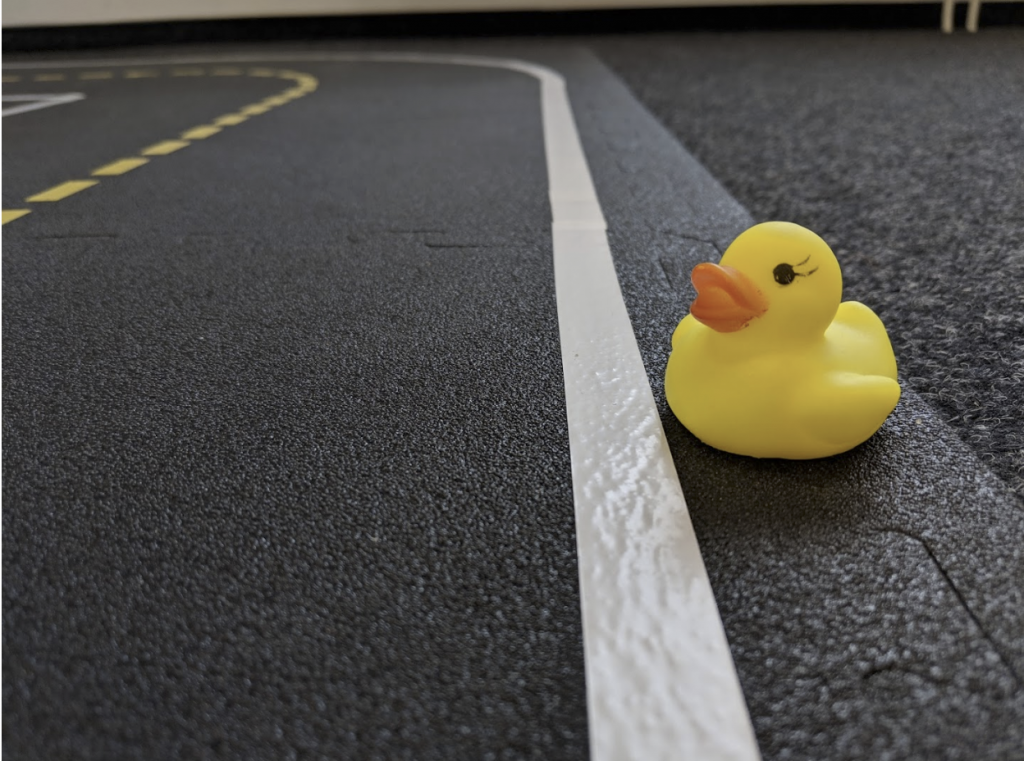

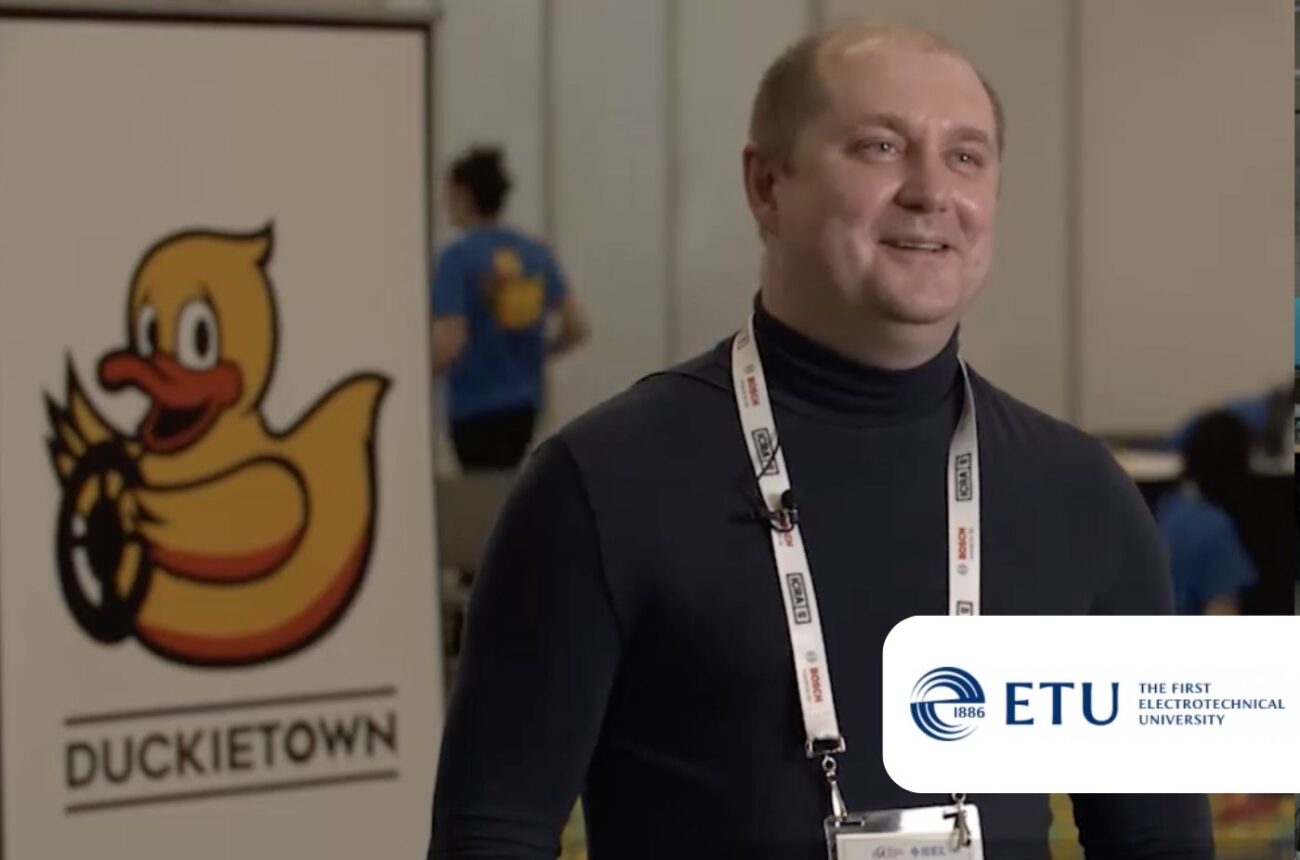
One thought on “STEM Intensive Learning with Prof. Krinkin”
Comments are closed.